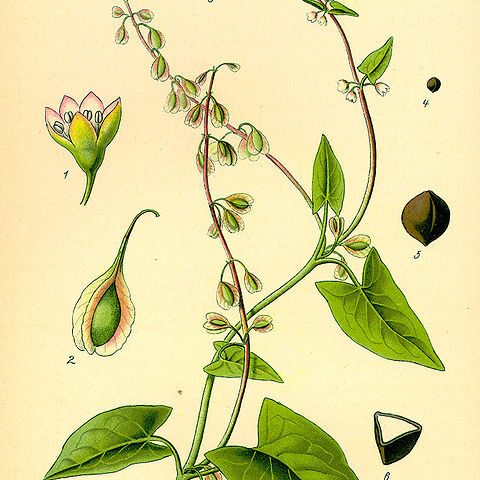Annual or perennial climbing herbs or shrubs; stem annual. Ochreae well-developed, scarious. Lvs cauline, cordate-sagittate or deltate. Infl. lax, terminal or axillary, spike-like or paniculate; fls ☿. Pedicels jointed. Perianth segments 5-(6), ovate or elliptic, free, moderately accrescent, pale green, white, pink, or rose, the outer 3 larger and keeled or winged. Stamens 8. Stigmas 3, subsessile, capitate. Fr. a trigonous nut, not exceeding perianth, spineless.
Herbs annual, rarely subshrubs. Stems twining. Leaves simple, alternate, petiolate; leaf blade ovate or cordate, margin entire; ocrea tubular, apex oblique or truncate. Inflorescence racemose or paniculate. Flowers bisexual. Perianth persistent, 5-parted; outer 3 tepals larger, keeled or winged, rarely without keels or wings. Stamens 8. Styles very short; stigmas capitate. Achenes trigonous, ovoid.
Stamens 8; filaments subulate, or enlarged toward the base; interstaminal nectaries lacking, but with glandular hairs around the base of the filaments.
Flowers hermaphrodite, arranged in lax racemes or panicles or in clusters in leaf axils.
Perianth 5(6)-merous, the 3 outer segments accrescent and keeled or winged in fruit.
Ovary trigonous, with 3 styles; stigmas capitate or peltate, subsessile.
Annual or perennial herbs, sometimes shrubs.
Ocrea truncate and ± laciniate at the apex.
Nut trigonous, not exceeding the perianth.
Stems scrambling or climbing.
Leaves alternate, petiolate.

